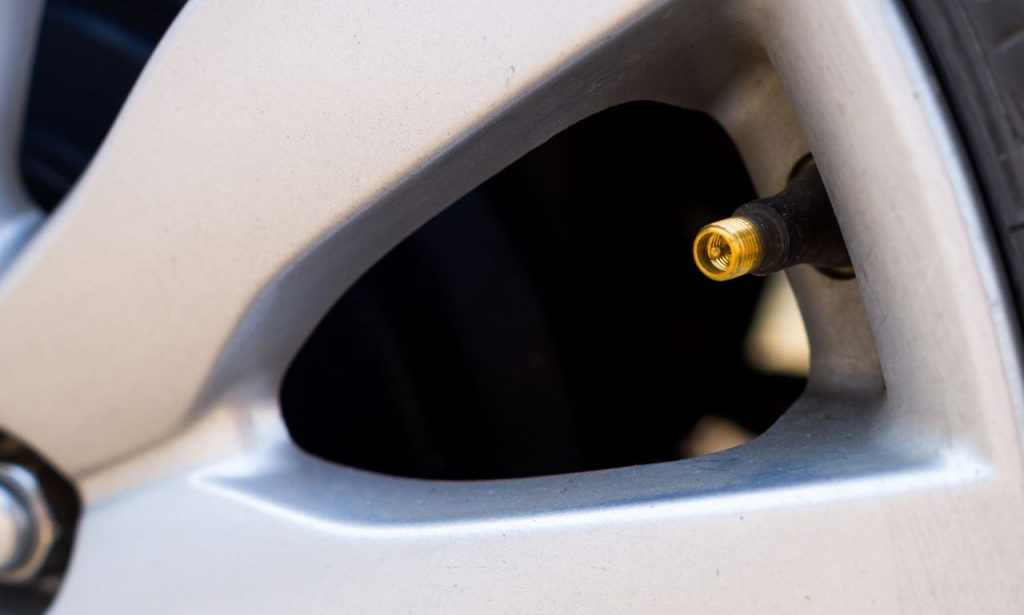Encountering a punctured tire can be a frustrating experience, but understanding your options for repair can ease the stress. One common solution is a tire plug, a quick fix that can get you back on the road swiftly. However, you might wonder, “How long can you drive on a tire plug?” This isn’t just a question of convenience; it’s crucial for ensuring your safety and the longevity of your tire. This article dives deep into the world of tire plugs, providing comprehensive insights to help you make informed decisions.
What is a Tire Plug?
A tire plug is a piece of malleable rubber inserted into a puncture in your tire to seal the hole. It serves as a temporary fix, allowing you to continue driving until a more permanent solution can be applied. Tire plugs are typically used for small punctures caused by sharp objects like nails or screws. They are designed to prevent air from leaking out and to restore the tire’s integrity temporarily.
Temporary Fix for Small Punctures Caused by Sharp Objects

Tire plugs are most effective for small punctures, generally less than 1/4 inch in diameter, and located in the tread area. They are not suitable for larger holes or punctures in the sidewall, which require more extensive repairs or tire replacement. The primary advantage of a tire plug is its ability to provide a quick and convenient solution, allowing you to drive to a place where you can get a more permanent repair.
The Lifespan of a Tire Plug
The longevity of a tire plug can vary depending on several factors, including the size and location of the puncture, the quality of the plug, and how well it was installed. Generally, a tire plug can last anywhere from a few days to several months. However, it is essential to understand that a tire plug is not a permanent solution and should be replaced with a proper repair as soon as possible.
Factors Influencing the Lifespan
- Quality of the Plug: Higher-quality plugs made from durable materials tend to last longer than cheaper alternatives.
- Installation: Proper installation by a professional can significantly extend the lifespan of a tire plug. Incorrect installation can lead to leaks and further damage.
- Driving Conditions: Rough roads, high speeds, and heavy loads can reduce the lifespan of a tire plug. Gentle driving on smooth roads can help it last longer.
- Tire Condition: Older tires with more wear and tear may not hold a plug as effectively as newer tires.
Risks Associated with Driving on a Tire Plug
While a tire plug can be a lifesaver in an emergency, driving on a plugged tire carries certain risks. Understanding these risks can help you make informed decisions about your vehicle’s maintenance and safety.
Decreased Tire Performance
A tire with a plug may not perform as well as an undamaged tire. You might experience reduced traction, especially in wet or slippery conditions. This decrease in performance can impact your vehicle’s handling and braking capabilities, increasing the risk of accidents.
Potential for Further Damage
Driving on a plugged tire for an extended period can lead to further damage. The plug might shift or become dislodged, causing the tire to lose air rapidly. Additionally, the puncture might expand, leading to a blowout. Such scenarios can be dangerous, especially at high speeds or in heavy traffic.
Importance of Professional Inspection
After plugging a tire, it’s crucial to have it inspected by a professional as soon as possible. A trained technician can assess the damage, ensure the plug is secure, and determine if a more permanent repair or replacement is necessary. Ignoring this step can lead to unforeseen issues on the road.
Assessing Safety of Plugged Tire
To ensure the safety of a plugged tire, several factors need to be considered. Regular inspections and proper maintenance can help you avoid potential hazards.
Visual Inspection
Perform a visual inspection of the tire regularly. Look for signs of wear, bulges, or further damage around the plugged area. If you notice any abnormalities, it’s best to consult a professional immediately.
Monitoring Tire Pressure
Keep an eye on your tire pressure. A plugged tire might lose air more quickly than an undamaged one. Use a tire pressure gauge to check the pressure regularly and refill as needed. Maintaining proper tire pressure is essential for safe driving and optimal performance.
Professional Assessment
Schedule a professional assessment of the plugged tire. A technician can perform a thorough inspection, including checking for internal damage that might not be visible from the outside. They can also recommend whether a patch or a complete tire replacement is necessary.
Repairing or Replacing the Tire
Deciding whether to repair or replace a plugged tire depends on the extent of the damage and the overall condition of the tire.
When to Repair
A tire can be repaired if:
- The puncture is in the tread area and is less than 1/4 inch in diameter.
- The tire is relatively new and in good condition.
- The plug was installed correctly, and the tire holds air without issues.
In such cases, a professional can often apply a patch or a combination of a plug and patch to provide a more permanent solution.
When to Replace

Replacement is necessary if:
- The puncture is in the sidewall or shoulder area.
- The hole is larger than 1/4 inch in diameter.
- The tire shows signs of significant wear and tear, such as low tread depth or multiple punctures.
- The plug has failed, and the tire cannot maintain proper air pressure.
In these situations, replacing the tire is the safest option to ensure your vehicle’s reliability and performance.
Cost Comparison
Here’s a table comparing the costs of repairing versus replacing a tire:
| Service | Average Cost (USD) |
| Tire Plugging | $10 – $20 |
| Tire Patching | $20 – $40 |
| Tire Replacement | $50 – $200+ |
While repairing a tire is generally more cost-effective, replacement is sometimes necessary for safety reasons.
Conclusion
Understanding how long you can drive on a tire plug is crucial for your safety and vehicle maintenance. While a tire plug can provide a temporary fix, it’s essential to get a professional inspection and consider a more permanent repair or replacement. By following the guidelines outlined in this article, you can make informed decisions and ensure the longevity and performance of your tires.
ALSO READ: Why Does My Car Smell Like Popcorn?
FAQs
Signs of a failing tire plug include a decrease in tire pressure, visible damage around the plugged area, and unusual tire wear. If you notice any of these signs, consult a professional immediately.
It’s not recommended to drive long distances on a plugged tire. While a plug can offer a temporary fix, it’s best to have the tire professionally repaired or replaced before embarking on long trips.
A tire plug is inserted into the puncture from the outside, while a patch is applied to the inside of the tire. Patches are generally considered more permanent and reliable than plugs, especially for larger punctures.
Check a plugged tire regularly, at least once a week, for signs of wear, air pressure loss, and overall condition. Regular inspections can help you catch potential issues early.
While it’s possible to use a tire plug kit yourself, it’s recommended to have a professional perform the repair to ensure it’s done correctly and safely. A professional can also inspect for internal damage that might not be visible from the outside.




